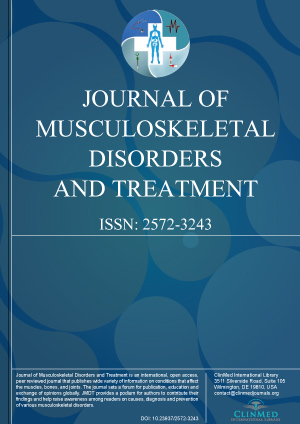Open Access DOI:10.23937/2572-3243.1510015
Perspectives on Improving the Efficacy of PRP Treatment for Tendinopathy
James H-C Wang and Xavier Nirmala
Article Type: Commentary | First Published: June 30, 2016
Platelet-rich plasma (PRP), popularly called PRP, is almost like a "house-hold" name these days because of its wide recognition by physicians and patients due to its prevalent use. The popularity of PRP is due to its efficacy in treating chronic tendon injury (or tendinopathy) in some clinical studies. It is particularly preferred by elite athletes because PRP injections were reported to accelerate healing and enable quicker return to sport activities....
Open Access DOI:10.23937/2572-3243.1510014
Medial Epicondylitis and Medial Elbow Pain Syndrome: Current Treatment Strategies
Christina Brady and Anil Dutta
Article Type: Review Article | First Published: June 03, 2016
Medial elbow pain is a common complaint in the active population. The most frequent muscular or tendinous condition to cause medial elbow pain is Medial Epicondylitis (ME). The disorder is classically described as Golfer's elbow due its association with elbow pain caused by excessive eccentric force across the common flexor origin encountered during the golf swing. In the working population, the condition is frequently associated with repetitive use and is seen in manual laborers who require for...
Open Access DOI:10.23937/2572-3243.1510013
Regenerative Therapy in Osteoarthritis of the Knee
Jonathan Theo and Edward Pang
Article Type: Literature Review | First Published: May 21, 2016
Osteoarthritis (OA) is the most common joint disorder in the world. It commonly affects the knee and current treatment options are limited, focusing mainly on symptom relief. It is now known that OA is the result of both mechanical and biological events that disrupt anabolic and catabolic processes in the joint. Recently, research in regenerative therapies has been gaining interest because of its potential to restore normal structure and function following tissue injury. The goal is to use the b...
Open Access DOI:10.23937/2572-3243.1510012
Outcomes of Non-operative Management of Deep Gluteal Syndrome - A Case Series of Six Patients
Ricardo Goncalves Schroder, Rob Roy L Martin, Valerie L Bobb, Anthony Nicholas Khoury, Ian James Palmer and Hal David Martin
Article Type: Case Series | First Published: April 27, 2016
The detailed history, physical examination, imaging, diagnostic testing, and physical therapy of six subjects diagnosed with deep gluteal syndrome were retrospectively analyzed and reviewed. Conservative treatment included neuropsychiatry management, intra-muscular injections through CT guidance, intra-pelvic assessment/therapy, and a home exercise program. The Visual analog scale (VAS), modified Harris Hip Score (mHHS) was utilized to measure outcomes of the non-operative treatment....
Open Access DOI:10.23937/2572-3243.1510011
The Effects of Manual Mobilization on the Mobility of the Thoracic Spine in Patients with Ankylosing Spondylitis
Uwe Lange, Martin Sperling, Katrin Richter, Gabriel Dischereit, Ulf Muller-Ladner and Ingo H. Tarner
Article Type: Original Article | First Published: April 26, 2016
Two groups, each consisting of 12 patients, were treated with standard physiotherapy during a regular inpatient stay. After randomization, one group was also treated with manual mobilization of the thoracic spine for an average of 6 sessions, whereas the other group only received conventional physiotherapy. The primary outcome parameter was the mobility of the thoracic spine represented by the Ott's sign. The secondary outcome parameters were pain (VAS), respiratory function (differences of ches...

